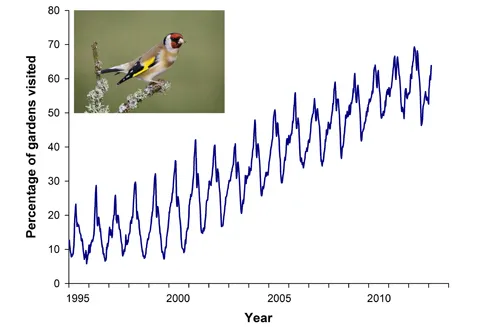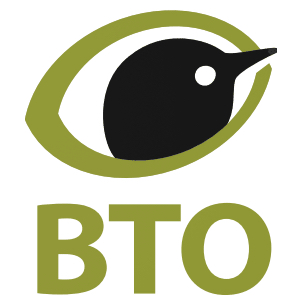The view from a kitchen window has gained some sparkle over recent years thanks to a gold rush in gardens.
It takes only a glance at a goldfinch to understand why this species was once commonly kept as a caged bird. It is also pretty easy to imagine why the collective noun for these birds is a ‘charm’.
With their crimson faces, golden wing bars and bubbling twitters, goldfinches are a visual and auditory delight. During late winter, when such vibrancy remains a scarce commodity in gardens, goldfinches bring welcome glamour and excitement.
At this time of year they often move in flocks alongside other finches, such as siskins and lesser redpolls, so look out for big numbers of these birds moving through. What’s more, for fans of goldfinches, the great news is that their numbers are on the up.
What is the scientific name of the goldfinch?
The scientific name of the goldfinch is Carduelis carduelis. This is an example of a tautonym, where the genus and specific name are the same.
Why have goldfinches increased in gardens?
Every week since 1995, thousands of householders have been telling the British Trust for Ornithology (BTO) about the birds that they see in their gardens through Garden BirdWatch.
In the early years of the survey, goldfinches were less frequent visitors than they are today. During a typical week in 1995, around one in eight Garden BirdWatch participants hosted this bird.
By 2012, however, this figure had rocketed to around three in five.

Percentage of gardens visited by goldfinch (data from BTO Garden BirdWatch; photo by Edmund Fellowes.)
Late winter sees numbers of goldfinches in gardens rise as natural seeds in the countryside become scarce.
Goldfinches peak in their use of gardens in April, with a secondary peak around the time that they lay their eggs in June. So, if you don’t have one visiting at the moment, don’t give up hope yet.
How to attract goldfinches to your garden
At garden feeding stations, goldfinches are particularly partial to small, oil-rich seeds, like nyger seed and sunflower hearts. These foods have become much more widespread in gardens over recent decades, attracting goldfinches in from the surrounding countryside.
Feeder designs have also changed, with larger (ring or triangle-shaped) perches helping goldfinches and many other seed-eaters to get more of a foothold in gardens.
Remember, nyger seed is very fine and will pour out of a conventional seed feeder, so you will need to buy a specialist nyger feeder.
Gardeners can also help goldfinches by fostering a number of plant species, mostly in the family Asteraceae, such as groundsels, which provide alternative ‘natural’ foods.
Teasels are another favourite – goldfinches are the only UK finch with a long enough beak to be able to extract its seeds.
Like other common finches, goldfinches appear to favour gardens that have large trees nearby, which help them to survey an area before dropping down onto feeders.
How to identify a goldfinch
Goldfinches are unmistakable. Adults have red, clown-like faces with buff breast and shoulders. Their wings are mainly black, with white spots but are characterised by a broad, gold wing-bar on each wing.
Please note that external videos may contain ads:
Identifying goldfinches and greenfinches. © BTO
Sexes look alike, although the red mask of the male, not the female, extends slightly past the eye towards the back of the head.
Recently fledged birds do not have a red face, which moults through during late summer and autumn.
Goldfinches are bigger than siskins, but are slightly smaller than chaffinches and greenfinches.
Please note that external videos may contain ads:
#BirdSongBasics - greenfinch and goldfinch. © BTO
The British Trust of Ornithology (BTO) works in partnership with over 40,000 volunteer birdwatchers to chart the fortunes of UK birds.
Main image: A goldfinch in Ile de France, France. © Gerard Soury/Getty
